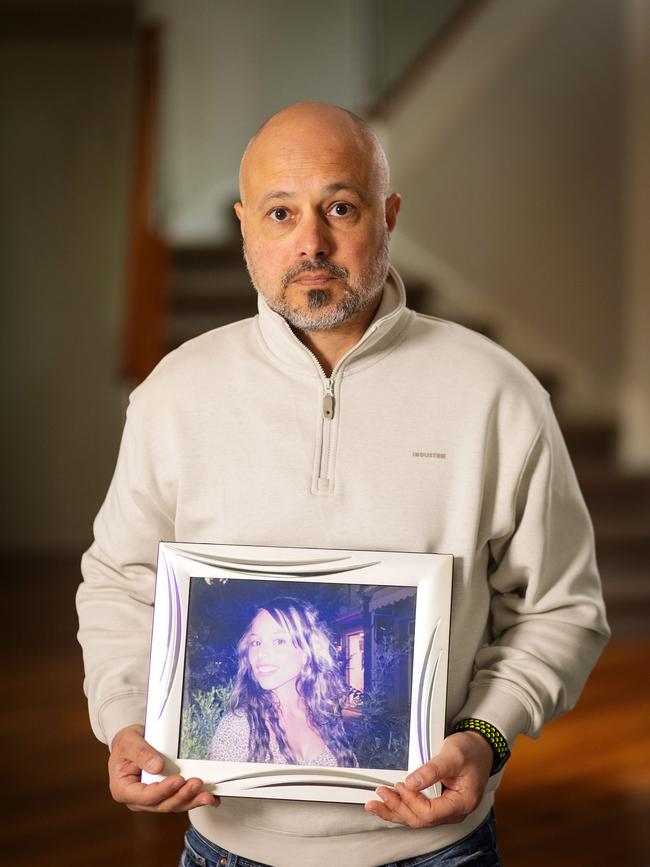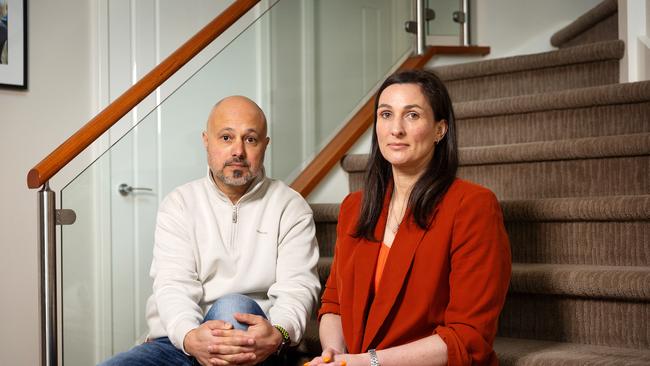Calls for an inquest into the death of 24-year-old Louisa Ioannidis, who was found dead in a Melbourne creek, have grown after new evidence was discovered.
The 24-year-old’s lifeless body was found by strangers walking at Darebin Creek in Melbourne on October 11, 2011.
It’s unclear how Ms Ioannidis ended up there, but in her final hours, neighbours reported seeing blood on her ear, followed by an unsuccessful attempt to flee the country.
Since her story was shared publicly for the first time in 13 years by this masthead, 7214 people have signed a change.org petition calling for a coroner’s inquest into the mysterious death.
The fresh calls have been driven by new evidence from ex-cop turned private investigator Julia Robson.
“It’s truly heartening to see the overwhelming support received,” Ms Robson said.
“Watching the numbers grow everyday is so encouraging and provides immense comfort to Louisa’s friends and family, inspiring them to keep pushing for answers”.

During the investigation, police spoke to her partner, who is known as Joe – but isn’t his legal name. He was facing a domestic violence charge at the time, but the matter never proceeded due to the death.
Months before her death, Ms Ioannidis was flagged as “at risk” by police during Operation Check Up 2011, a proactive domestic violence initiative.
There are no suggestions Joe is responsible for what happened to Ms Ioannidis.
Despite the cause of death being recorded as “consistent with drowning”, questions remain about how she ended up in the creek.
Her half-brother Anastasios, known as Tass, has being seeking answers since his sister’s death.
Ms Ioannidis was last seen by her neighbour when she popped in to use their mobile phone.
Police and the coroner partly relied on Joe’s account. He claimed that at about 9:45pm, Ms Ioannidis left home and ran towards Darebin Creek.
No witnesses saw her enter the water that night, nor did anyone see her struggling in the water.
Watch the exclusive video below:
A CHILLING FIND
Darebin Creek in Melbourne’s north connects quiet neighbourhoods before meeting the Yarra River.
It was at this creek, near Preston Parklands, where two passers-by discovered Ms Ioannidis’ body.
A police statement later described her wearing only one sock, tight jeans, and a pink dressing gown. A detective at the scene declared the death non-suspicious.
The decision not to involve the homicide squad meant no additional experts were called in.
Tass last spoke to his sister two weeks earlier.
“For a week or two, I was trying to get a hold of her by her phone, which just kept going to her message bank. I also sent her emails as well,” he said.


He eventually became so concerned that he drove over to her unit in Preston.
When he arrived, however, he found the house locked up and his sister nowhere to be found.
He then drove straight to Reservoir Police Station, explained his concerns about his missing sister, and gave the officer her description, including her address.
When Tass reported her missing, the cop who spoke to him never filed an official missing persons report.
The officer who spoke to Tass also happened to be the one who attended Darebin Creek the day Louisa’s body was found, just two days later.
DOMESTIC VIOLENCE ALLEGATIONS
In the months leading up to Ms Ioannidis’ death, she had openly spoken with friends and family about wanting to leave her relationship.
And in June 2011, she reported an alleged assault to police. In her statement she said: “Joe grabbed me by the shoulder and hair, dragged me out of the car, and told me to shut up and get inside.”
Police charged Joe with assault, but due to her death, the matter never proceeded.

THE FINAL MOMENTS
Ms Ioannidis was last seen by her neighbour when she popped in to use their mobile phone.
“A neighbour said they had noticed blood near Louisa’s left ear (in the morning),” Ms Robson said.
“However, that evening (a different neighbour saw) the blood seemed to have migrated to the other side of her head.”
Police and the coroner partly relied on Joe’s account. He claimed that at about 9:45pm, Louisa left home and ran towards Darebin Creek.
No witnesses saw her enter the water that night, nor did anyone see her struggling in the water.
Adjunct Professor and Criminologist Kerry Carrington expressed concern that the person recounting Ms Ioannidis’ final movements was also facing charges for allegedly assaulting her.
“Because she’s dead, her voice is silent,” Ms Carrington said.
“The only perspective that seems to be considered is the perspective of the partner.”
Joe later said he walked through Darebin Creek’s parklands the next morning after Ms Ioannidis vanished and spotted her pink dressing gown caught on a branch in the creek.
But rather than approach the dressing gown, Joe told police in a statement that he decided to turn around and go home.
Over the next few days he allegedly told friends Ms Ioannidis was missing and a pink gown was in the creek.
DROWNING CLAIMS
Despite theories Ms Ioannidis drowned, historical data now shows the creek was approximately 40 centimetres deep that night.
Ms Robson said this information “completely challenges” the theory that the drowning could be attributed to high water levels in the creek.
“A critical aspect of this case is also the troubling eight-day gap between Louisa last being seen alive and the discovery of her body in the creek,” Ms Robson said.

“This period is vital to consider, as the onset of decomposition, particularly in water, could have obscured key forensic evidence that may have helped confirm her cause of death.”
Two experts echoed these statements.
“Inner suburban creeks don’t have currents,” Adjunct Professor and Criminologist Kerry Carrington said.
“You wouldn’t drown if you could swim. You would drown if you became unconscious, or if you were unconscious when you were thrown in or fell in.”
Expert Andrea Zaferes, who has extensive experience in water-related deaths, also echoed those statements after looking at the autopsy report.
“I don’t see anything here that is even consistent with drowning,” Ms Zaferes said.
“She has normal weight lungs and according to this her lungs are completely normal.
“You cannot just look at a body and say, ‘Oh, they drowned’ or ‘no, they didn’t drown’.
“This (death) should have been undetermined.”
A FINAL PUSH
As the push for a inquest continues, one thing remains clear: until the circumstances surrounding the death are thoroughly examined and understood, there will be no closure.
Friends and family believe an inquest is essential.
“There’s still information we haven’t accessed as well as identified inconsistencies in witness statements that need to be tested,” Ms Robson said.
“If Louisa’s death was determined to be ‘undecided’ rather than consistent with drowning, then that also suggests a possibility Louisa may have already been incapacitated, even deceased, on entry to the creek.”
You can listen to Louisa Ioannidis’ full story on podcast Troubled Waters


‘Happy to roll’: The texts, emails that could cost Pendlebury millions
Scott Pendlebury’s finances have been laid bare in a bitter court battle with a former close friend and business partner.
‘It was stupid’: Accused high-profile rapist gives his version of events
A high-profile man accused of raping a woman in a Melbourne house says he was shocked when he first heard the allegations against him and admits he made a “stupid” choice while he was stressed and panicked.